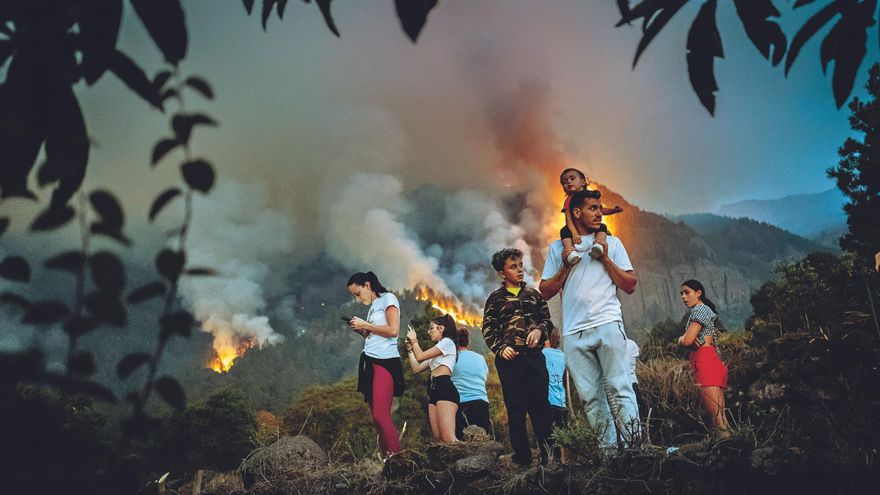
Despite the opinion of the Vox deniers and the cousin of some former president of the Government of Spain, the Canary Islands endure a climatic mess of such caliber that it has not only led the Islands to suffer the hottest summer that the Archipelago has suffered in the last 62 years, but also, what is more serious, the fire has been at the gates of the Teide National Park and went almost as far as La Caldera de Taburiente. All this in the same 2023 in which a blanket of sleet painted the Timanfaya National Park and a good part of the Island of Lanzarote white.
Quickly and as it could not be otherwise, the Canary Islands created the first haze analysis laboratory in Europe, a phenomenon that, together with the drought, caused the production of grapes and papaya to decline, causing their prices to rise. Likewise, in August, the heat forces us to throw away five million kilos of bananas.
The climatic situation is so complex that an operation has even been launched to save the Canary Islands black bees from extinction.
In January, the Chira dam received support from the EU with 90 million funds to decarbonize Gran Canaria.
For its part, the agreement on the transfer of Costas’ powers does not satisfy the Canary Islands, as published on February 8, while on April 26 the first license was granted to build on the Tajogaite lava, in La Palma, where More than 2,000 residents affected by the volcanic crisis are still being cared for. And like a skinny dog everything is fleas, in July the flames force 4,200 palmeros to evacuate.
The European Union, for its part, is contributing millions of euros for the green transformation of La Gomera, a territory in which a total blackout occurs between the end of July and the beginning of August, leaving more than 10,000 La Gomera homes without electricity.
That two hikers died on August 14 during the extreme heat alert due to high temperatures issued by the authorities in Morro Jable and Tenerife may be the result of bad luck or irresponsibility, but it is not normal in the Islands that during October temperatures above 30º throughout the night.
The climate crisis caused classes to be suspended on the Islands for the first time in History due to the heat wave on October 11, also coinciding with the lowest water records in the Archipelago’s dams.
Felipe VI and Queen Letizia visit La Palma and Tenerife out of solidarity with those affected by the fires and on December 21, in addition, the creation of 54,000 consumer bonds is announced to reactivate the commercial activity of the municipalities affected by the Tenerife fire.
















